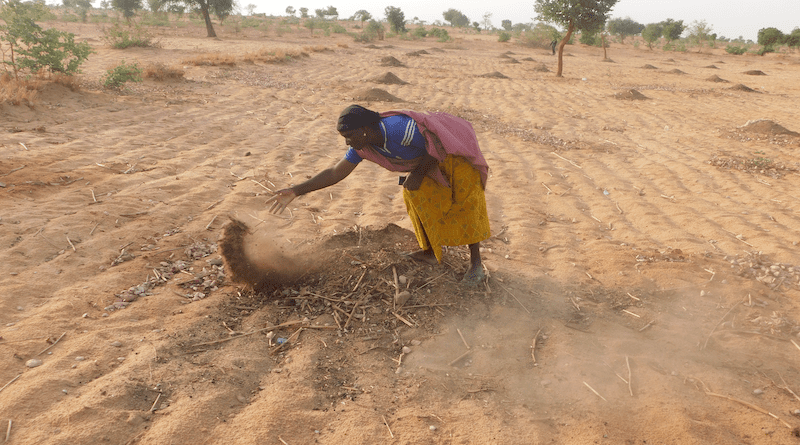Using Urine To Make Sub-Saharan City Region Food Systems More Sustainable
Installing urine collection systems in sub-Saharan city regions would make those conurbations more sustainable. This was demonstrated by a study by four researchers from CIRAD, IRD, Boubakar Bâ University of Tillaberi (Niger) and Joseph Ki-Zerbo University, Ouagadougou (Burkina Faso), published in the journal Regional Environmental Change. For their study, the researchers analysed nitrogen flows in waste in two sub-Saharan cities: Maradi (Niger) and Ouagadougou. The study was a first, and showed that urine was the main source of nitrogen losses. Collecting that urine could provide valuable fertilizer suitable for local agricultural use, and thus serve to make city region food systems more sustainable.
Current urban development trajectories in sub-Saharan Africa are not sustainable. Fast-growing cities constitute nutrient sinks relying on nutrient-poor hinterlands. Those sinks, and the degradation and draining of nutrients in hinterlands, have significant environmental and health impacts. This runs counter to The UN Sustainable Development Goal 11, which aims to “make cities and human settlements inclusive, safe, resilient and sustainable”.
To give the authorities a cross-sectoral view of a city’s nutrient sink status, the researchers identified and analysed a range of waste flows. Their approach distinguished four nested spatial levels: the urban area; the potential territorial recycling system; the country and the international level. Based on that analysis, the researchers focused on the origin and fate of those nutrient-containing waste flows. The method was applied to nitrogen in Maradi and Ouagadougou, to determine whether and to what extent those city regions could progress towards sustainable urban food systems. The fact of focusing on the nitrogen in waste rather than on waste flows themselves enabled a systemic understanding useful to the local authorities.
The study showed that Maradi was a nitrogen sink, albeit at the heart of a still relatively sustainable urban food system. However, it could well evolve towards a situation similar to that of Ouagadougou: a large nitrogen sink with no significant city-hinterland recycling. Although of contrasting size, currently around 400 000 and 2 800 000 inhabitants respectively, these two cities evolve in highly similar biophysical, climatic, agricultural and socioeconomic settings. Their respective results may thus be considered an approximate illustration of a development trajectory.
The study provided the first overview of waste-contained nitrogen flows in sub-Saharan cities. Existing reports so far provided only partial, sectoral assessments, focusing either on waste management, on sanitation, or on agriculture, while this study showed that nitrogen losses through sanitation and waste management largely exceeded other waste-contained nitrogen flows in these cities. Urine is therefore the main source of nitrogen loss. Urine collection initiatives to enable its use as a fertilizer would make urban systems more independent and resilient. This would improve regional food provision and reduce sanitation-induced urban water pollution, making urban systems more sustainable. The researchers consider that addressing the potential for urine recycling would be a worthwhile follow-up to this study.

